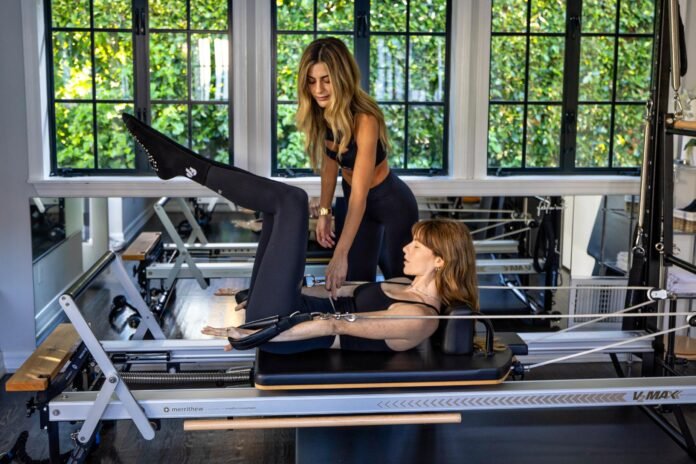Working out from home is a convenient way to stay fit, but without a trainer to correct your form, you may not be getting the full benefits—especially with Pilates. Since Pilates focuses on small, precise movements to enhance muscle tone, proper form is crucial for effective results.
To help you improve your at-home Pilates practice, we spoke with Kerrie-Ann Bradley, Pilates instructor and founder of Pilates At Your Desk. Here are the most common mistakes she sees in Pilates classes and how to fix them.
1. Overusing the Big Glute Muscles
The glutes—comprising the gluteus maximus, medius, and minimus—are the body’s most powerful muscles. While strengthening them is important, many people tend to overuse them in certain exercises.
The Mistake: Many instructors cue students to squeeze their glutes at the top of a squat. However, this activates the upper glute maximus and glute medius more than necessary, rather than targeting the lower part of the glutes for better movement efficiency.
The Fix: Bradley suggests focusing on pressing through your heels when squatting. This engages the lower glute maximus and hamstrings, ensuring you work the right muscles and develop a strong foundation.
2. Squeezing Your Stomach Instead of Engaging Your Core
Core engagement is a fundamental principle of Pilates, but many people misunderstand how to activate their core effectively.
The Mistake: Instead of properly engaging their core, many people squeeze or suck in their stomach, which can create tension without actually strengthening the muscles.
The Fix: Bradley advises using your breath to naturally engage your core. “When you breathe out through your mouth, your tummy naturally drops—this is enough to activate your core.” Instead of gripping or pulling in your stomach forcefully, think of your belly button gently dropping toward your spine for proper engagement.
3. Incorrect Alignment in Bridge Pose
Bridge pose is a staple in Pilates for strengthening the glutes, core, and back. However, improper hip positioning can reduce its effectiveness.
The Mistake: Many people lift their chest too high in a bridge, shifting focus away from their hips. Additionally, uneven hips can create muscle imbalances.
The Fix: “When performing a bridge, push down through your heels to lift your hips from underneath, ensuring the highest point is your hips, not your chest,” Bradley recommends.
To keep your hips aligned, lift your head and check if they are at the same height. If one hip is lower, press down on the ball of your big toe on the lower side to level them out.
Perfect Your Pilates Practice
By making small adjustments to your form, you can maximize the effectiveness of your Pilates workouts, improve muscle engagement, and see results faster. Whether you’re strengthening your glutes, engaging your core, or refining your bridge pose, these expert tips will help you get the most out of your at-home Pilates routine.




